The oldest foods still eaten today
Spicy Adventures
Your cart is empty.
SUBTOTAL
£0.00

Spicy Adventures
For as long as life has existed on Earth, it has always needed energy to survive. This energy has often come in the form of food – something that’s edible and can be digested, converted into calories and burned as fuel. More than any other creature that has come before it, humans (homo sapiens) have mastered food. In the 21st century, the whole planet is geared towards producing what we need to survive. In many places, we now even enjoy an abundance of food. Walking into our local supermarkets, we’re lucky enough to choose pretty much anything from any corner of the globe. This is very much the golden age of food.
But it’s not always been so easy. For millennia, homo sapiens made do with what they had around them. They hunted and foraged, producing food that only utilised the local ingredients. What they created may well surprise you. Here are some dishes that we’ve been eating for a lot longer than you ever thought!
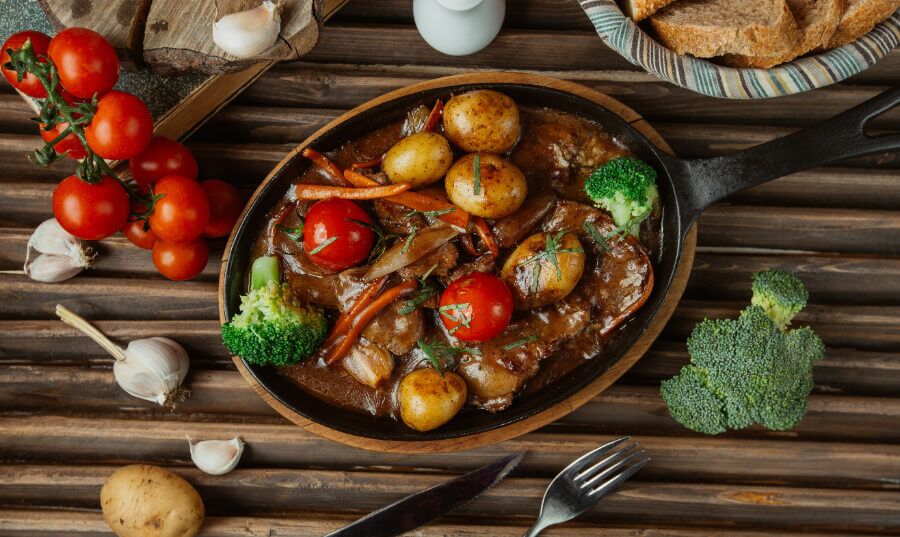
Who can say no to a delicious, heart-warming stew? Our ancestors from some 8,000 years ago couldn’t resist! Stews are a combination of solid foods (usually vegetables and meats) that are cooked in liquids and served in the gravy produced from the process. When you think about this, it makes a lot of sense as to why.
Back then, when homo sapiens didn’t have the luxury of worldwide goods in giant supermarkets, they simply used what they had. So many great stews are simply about chucking in the leftovers and grizzly bits, cooking it all together! The fact that stews are slow cooked over the course of many hours was also perfect. The earliest humans would have had campfires kept going throughout the day for both a source of warmth and a way to cook.
The oldest evidence of stew was found in Japan, dating to a period (known as the Jōmon period) when a hunter gatherer culture inhabited the land (around 1000BC). There’s also plenty of archaeological evidence that shows how Amazonian tribes used the shells of turtles as their cooking pots, boiling the entrails of the poor turtle and plenty of other ingredients inside them. Hungry yet? These practices have been going on for over 8,000 years. Whether you’re looking at the Roman cookbook Apicius (dated around 4AD) or the 14th century Le Viandier (one of the oldest French cookbooks around), you’ll find plenty of recipes for stew! There are even a few on our website. For example, check out this Dutch-Indonesian Semur stew
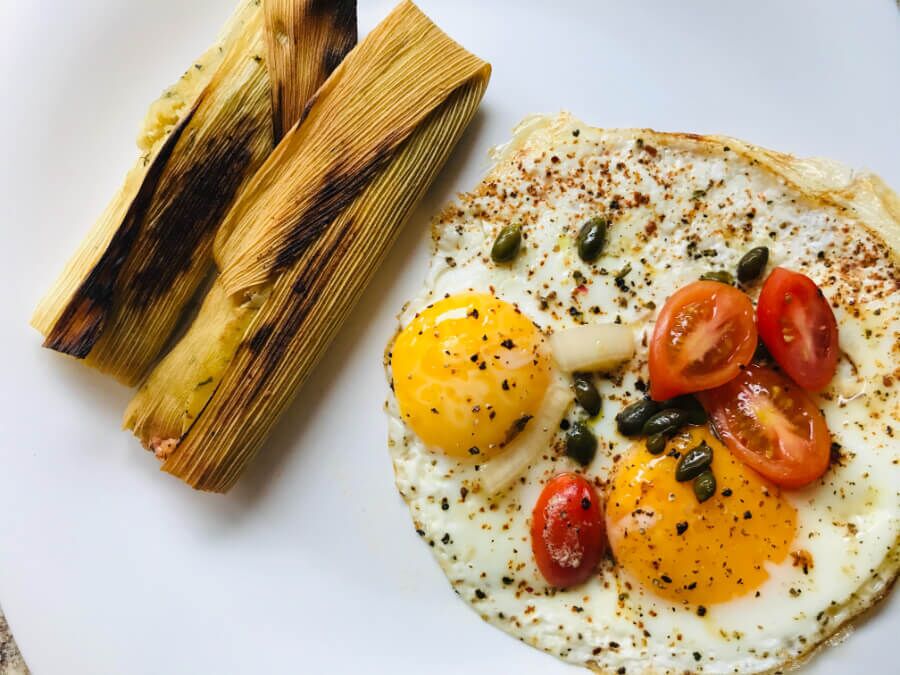
Made from starchy, corn-based dough, tamales are still enjoyed today all throughout Mexico and Central America, South America, the Caribbean, the US and even the Philippines. The dough is steamed in a corn husk or banana leaf and then filled with meats, cheeses, vegetables, chillies and fruit.
What’s amazing is that this food has been around since as far back as 8,000BC! It was originally consumed by the Aztecs, Olmecs and Toltecs of Central America, often served at festivals, ceremonial feasts and other special events. These ancient civilizations loved them because they were so easy to make and so easily portable. It made them perfect for the hunting trips and hunter gatherer lifestyle where they would sometimes have to travel and roam large distances.
Today, archaeological finds in the Central American region are turning up many fragments of pottery that bear the classic Maya hieroglyphic symbol for tamales. These date back to around 200-1000AD.
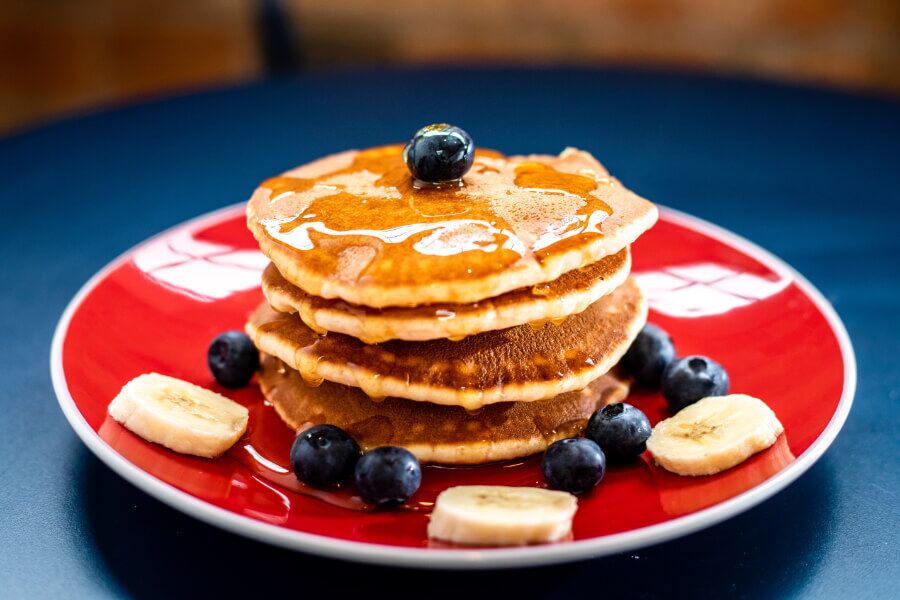
Yep. Whether they are the classically thin crepes found throughout France, Belgium and Europe, the thick ‘n’ fluffy types at American Diners (drowned in syrup, obviously), or something more exotic like dosa in South India which is actually made from fermented rice, the bottom line is that we all love pancakes.However, you may be surprised to hear that they’ve been around since 3300BC!
How do we know? In 1991, a mummified corpse was found in the Italian Alps. ‘Ozit the Iceman’ had resurfaced some 5,300 years after his death. Historians were amazed at how well preserved he was and on studying and analysing his body, they found out a great deal about the Neolithic diet. His last meal? Pancakes! They found traces of einkorn wheat pancakes in his stomach along with traces of charcoal, suggesting that they were cooked over an open fire.
Because of the simplicity of cooking pancakes and their very basic ingredients, it’s actually no surprise that they have been around for as long as they have.
The ancient Greeks were also fond of them. They were known as ‘tegenias’ or ‘teganites’ which derives from the word ‘tagenon’ (frying pan). There are poets from this era (around 500BC) who write about how they were made with wheat flour and olive oil, then served with curdled milk and honey. It was considered a breakfast item. Not too much has changed in a couple of thousand years!
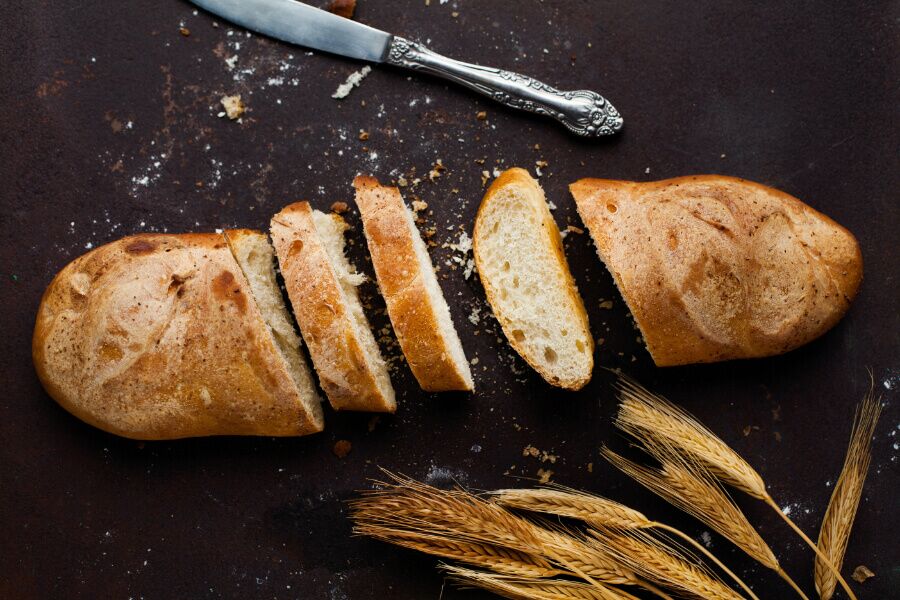
Bread is considered one of the staple foods. It’s a cornerstone of the human diet and again, like pancakes, it’s a very simple recipe using basic ingredients. All you need is flour and water which has been available to homo sapiens for millennia, making it one of the oldest known man-made foods.
How long ago are we talking? Well, there is evidence from as far back as 30,000 years ago (no, we haven’t added an extra 0) that bread was being made in Europe and Australia. Here, experts have found starch residue on rocks that had been used for pounding plants. It’s thought that this starch extract from roots of plants such as ferns was spread on to a flat rock then placed over a fire, cooking it into a primitive form of flatbread.
As for the definitive world’s oldest evidence of bread-making? Only 14,500 years ago. Archaeologists and historians uncovered a Natufian site in the northeastern Jordanian desert. It’s thought that around 10,000BC, the Neolithic age helped the spread of agriculture throughout the world as homo sapiens began to switch from being hunter gatherers to much more settled farmers. With that change, grain became a mainstay of making bread. The chances are that if humans are still around in another 10,000 years from now, bread will be too.

Here at Seasoned Pioneers, it’s difficult to imagine a life without curry. It turns out though, you’d have to travel a long way back in time to find such a reality. 2600BC, to be exact.
The word ‘curry’ originally came from the word ‘kari’ – a tamil word that means sauce or ‘relish for rice’. Archaeologists at a site in Pakistan known as ‘Mohenjo-daro’ have found that 4,000 years ago, people from the Indus Valley civilization were using stone mortars and pestle to grind up native spices of the regio – fennel, mustard, cumin and tamarind pods. Of course, rice was also native to this area and already being produced at this time. The classic curry and rice mix that we know today has been around for some time.
Archaeologists from the University of Washington have since identified the residue of ancient spices in both skeletons and pottery shards. Excavations in India revealed human teeth that showed signs of turmeric and ginger. Of course, curry didn’t stay in India forever. With the expansion of the Mughul Empire through the 15th century and the arrival of Portuguese traders not long after, curries underwent significant revisions and recipes spread throughout the whole world
If you want to know and learn more about India and the histories of their many curries, you can check out our extensive list of articles on the blog. For example, what is Korma? We also have plenty of recipes!
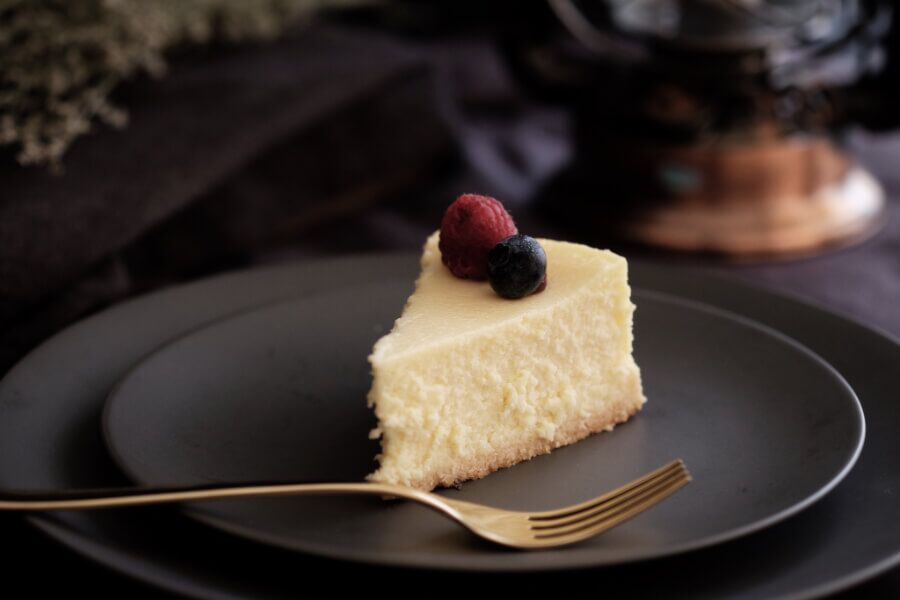
Last on our list but it could well be our favourite – cheesecake! Today’s modern versions (try not to salivate at the thought) require copious amounts of cream cheese – something that was only invented in 1827. So, how is cheesecake one of the oldest foods still around today?
It turns out the ancient Greeks had a bit of a sweet tooth. Using a simple but delicious mixture of honey, flour and soft cheese, a light cake was served often at weddings, festivals and other ceremonies. How do we know? It’s those archaeologists again, of course. Excavations have uncovered various pieces of broken cheese molds that date back as far as 2000BC. The earliest written mention of the recipe can be found in a book by the ancient Greek author Athenaeus, published in 230AD. However, historians known that the dessert was actually offered to the athletes taking part in the very first Olympic games (776BC)! We’re not sure that would go down so well today given the fine margins sports scientists and dieticians operate on.
When the Romans conquered Greece in 146BC, they of course adopted the recipe and who can blame them? They added eggs, as well as crushed cheese and they often flavoured it with orange or lemon zest. Fancy a slice right now? We’ve got you covered with our delicious New York Cheesecake recipe.
Similar to bread, we like to think that cheesecake is one of those foods that will be around for a little while longer. In fact, all of the foods mentioned here! What would we ever do without them?
Understanding Spices
Spices have long been integral to the UK's culinary landscape, adding depth, flavours, and richness to a myriad of dishes. From the pungent aroma of cumin in Indian curries to...
Read MoreUnderstanding Spices
Confetti is an essential part of any wedding day. Not only is it a wonderful way to greet a newlywed couple, but it also provides some beautiful photo opportunities. The...
Read MoreSeasonal Ideas
It’s no secret that any handmade gift will always be more special than a store-bought one. Homemade food gifts are especially wonderful, a labour of love that shows someone you...
Read MoreHealth and Wellbeing
It’s no secret that winter’s cold and gloomy weather makes us crave indulgent dishes like fondue and baked goods like sticky toffee pudding and apple crumble. While Christmas is the...
Read More